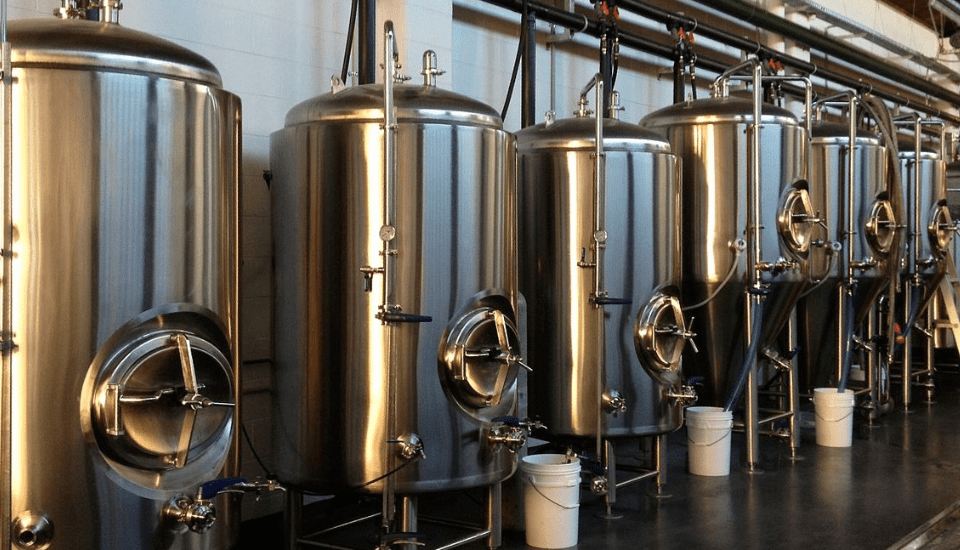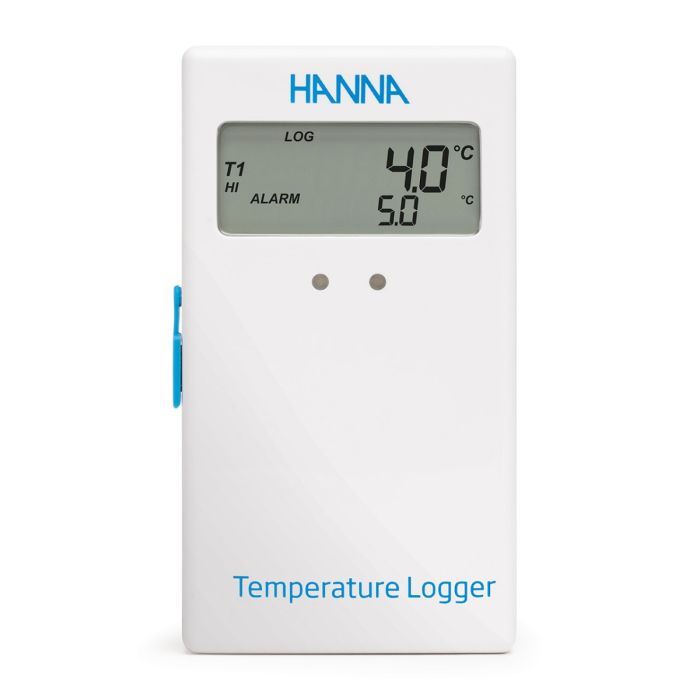
Environmental Monitoring of Nitrates and Other Water Quality Parameters: pH,
Environmental Monitoring of Nitrates and Other Water Quality Parameters: pH,...

Throughout the entire brewing process, temperature plays a critical role in developing a good quality beer that is consistent in taste. Small fluctuations in temperature can lead to a much different product than what was originally intended. The overall process of brewing involves a mash soak, lautering, boiling and cooling of the wort, pitching the yeast, fermentation, filtering, and a final bottling and carbonation.
temperature-in-beer-makingDuring the course of the mashing, lautering, and boiling processes the temperature is carefully controlled to effectively create wort, the sugary extract produced from malt, grains, and hops. After these stages, the wort is mixed with purified water and cooled to reach the proper temperature of 18°C to 24°C for yeast introduction. Once the yeast has been introduced, fermentation can begin. There is an optimal temperature range for fermentation that is dependent on the strain of yeast. When fermentation occurs outside of this optimal temperature range, byproducts, both desirable and undesirable, will be produced.
During a community outreach program at the Hanna Instruments headquarters, a local brewmaster spoke to professional and hobbyist brewers alike about the importance of temperature in beer making. The Applications Department followed the talk with a tasting experiment showing the effects of temperature adjustment during fermentation. Hanna’s experiment involved brewing three identical batches of Nut Brown Ale. The only difference between the three batches was the temperature during the fermentation stage. The three batches, named Nutty Ranger, Not Far From the Tree, and Temper Tantrum, were fermented at temperatures of 18°C, 22°C, and 27°C, respectively. An Irish Ale Yeast was used which has an optimal fermentation temperature of 17°C to 22°C. The Nutty Ranger was fermented in the middle of the optimal temperature range while Not Far From the Tree was fermented at lower temperature and Temper Tantrum fermented at a higher temperature.
It was observed that as the fermentation temperature of the batches increased, the resulting beers had a smell identified as more “fruity ” and a stronger “alcohol” taste. The “fruity ” effect, which was most prevalent in the Not Far From the Tree and Temper Tantrum brews, was due to an increase in the amount of esters produced during fermentation. Esters are aromatic chemical compounds that are a favoured byproduct of yeast at higher temperatures. The “alcohol” effect, which was highly noticeable in the Temper Tantrum brew, was due to an increase in the amount of fusel alcohols produced during fermentation. When fermentation occurs at higher than optimal temperatures, the formation of fusel alcohols such as propanol, butanol, and isoamyl alcohol are more prevalent; these alcohols are known to give an astringent, medicinal taste to beer. They do not increase the overall alcohol concentration of beer, but instead the types of alcohol present.

Fermenting temperatures were monitored with the HI148 datalogger. The HI148 was chosen as it has one external probe, which was immersed in the fermentation vessel, and one internal probe, which was used to monitor that ambient room temperature. All three dataloggers were programmed to record a measurement every 5 minutes over the course of 12 days; this provided just over 3400 data points, which is well within capacity of theHI148. The HI148 can log up to 16000 samples or 8000 samples per channel. It also features an LCD display that shows in sequence the current reading, number of readings taken, low reading, high reading, and number of readings that exceeded the set alarm limits for each channel. The HI148 was programmed with the HI141001 infrared transmitter and HI141000 Windows® compatible software. The magnetic remote key was used to start the datalogging by swiping over the top of the meter, and after logging was finished the data was downloaded after fermentation. The software was used to create a graph depicting the data collected by each datalogger for comparison between the three batches of beer.
Environmental Monitoring of Nitrates and Other Water Quality Parameters: pH,...
Salt Concentration In A Brine Solution For Curing Salmon Traditionally,...

To empower customers to achieve quality by supplying intuitive, accurate, and reliable analytical instruments with exceptional customer service and value.
We take pride in every product we build. From an original idea to a completed product ready for testing. We oversee every aspect of the manufacturing process. It is this level of attention to detail that sets us apart.
To empower customers to achieve quality by supplying intuitive, accurate, and reliable analytical instruments with exceptional customer service and value.
We take pride in every product we build. From an original idea, to a completed product ready for testing. We oversee every aspect of the manufacturing process. It is this level of attention to detail that sets us apart.
To empower customers to achieve quality by supplying intuitive, accurate, and reliable analytical instruments with exceptional customer service and value.
We take pride in every product we build. From an original idea, to a completed product ready for testing. We oversee every aspect of the manufacturing process. It is this level of attention to detail that sets us apart.

